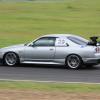Alcon TA6 Calipers on R33 GTST - Flexing
Announcements
-
Similar Content
-
Latest Posts
-
Ok gotcha, so one post to fpr another to bov and I have the mishimoto boost controller and a link g4+ so I’d just have the tuner set it up properly. For the last two from plenum post throttle to ecu/ boost controller, I know that I have a hose coming from the ecu that I was confused about so I assume that’s what connect to the boost controller from the ecu? And then the last is just from plenum to boost controller then to wastegate?
-
From there, it was just a quick electrical check, prime the oil and start her up Which, is not what happened. 1. Bloody seppo Aeropro battery holder. Not only was it too tall for the battery (which I'll forgive them for, I have another battery the same nominal size that is taller than Neil's one, but the bracket is a fixed height so the battery was spaced up) But the thing that really shits me is the hardware to hold it on requires a 7/32 Hex key. WTF. No-one will ever be able to remove or install the damn thing without a hex key they don't own 2. Kill switch no longer worked once the console was installed. Neil mentioned above he had to adjust the length but it no longer cleared the console once installed. Sorted. 3. Suspiciously, the brake light holders were hanging in the boot with no globes. Sure enough the stopper on the brake pedal was missing so they are always on unless the kill switch is activated. Will pick one up tomorrow (turns out 32 and 33 don't use the same stopper) 4. All that sorted, I turned on the kill switch, turned the key to ACC. Nothing. Turned it to IGN. Nothing. Checked some fuses and found the main IGN in the boot was missing which improved things once it was replaced. Now ECU and dash lights turn on with IGN but still no fuel pump. 5. Turned it to Start....ECU on, no fuel pump, no starter. Plus the voltage dropped straight to 9v. I suspect the starter is f**ked but am going to have to work through it all and see what is happening, really looks like more than one issue. Does anyone have the R33 fuse box key with the circuit it sources from (eg BAT, ACC, IGN, SRT etc) and supplies? I can find a translated list showing Amps and circuit without supply circuit, and I can find supply circuit without Amps and target circuit.
-
3rd time lucky, the AAC is now all plumbed up after getting some final fittings All set up under the plenum of maximum access
-
OK, so the weight has been bugging because it was really low. I did it again today and got a more believable answer at 1246 without driver And with a 93kg driver I'm pretty sure the car was still slightly on the quickjack last time meaning the full weight was not on the scales
-





Recommended Posts
Create an account or sign in to comment
You need to be a member in order to leave a comment
Create an account
Sign up for a new account in our community. It's easy!
Register a new accountSign in
Already have an account? Sign in here.
Sign In Now